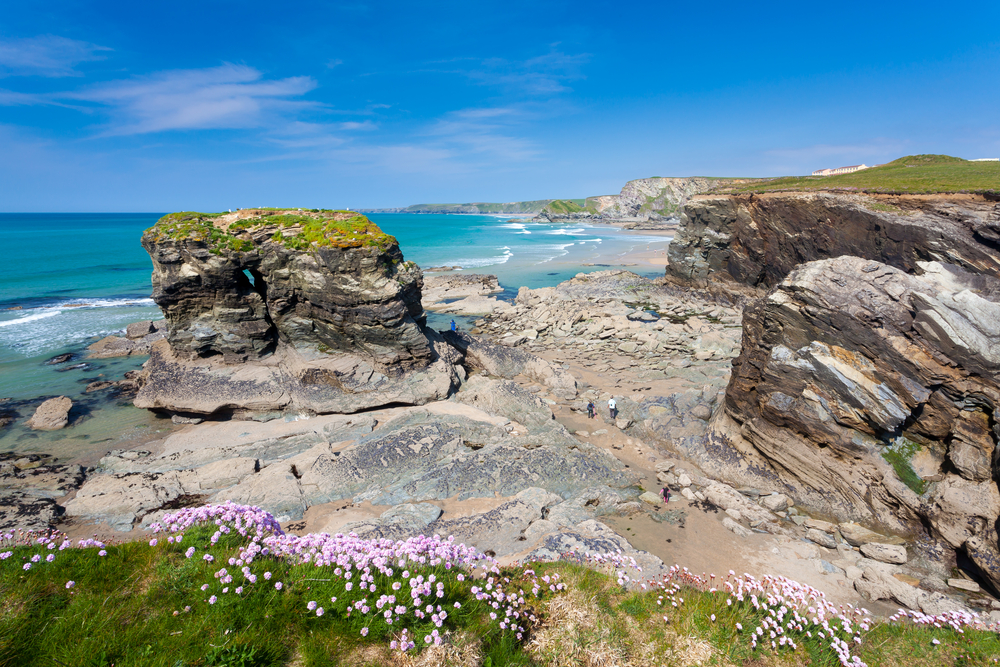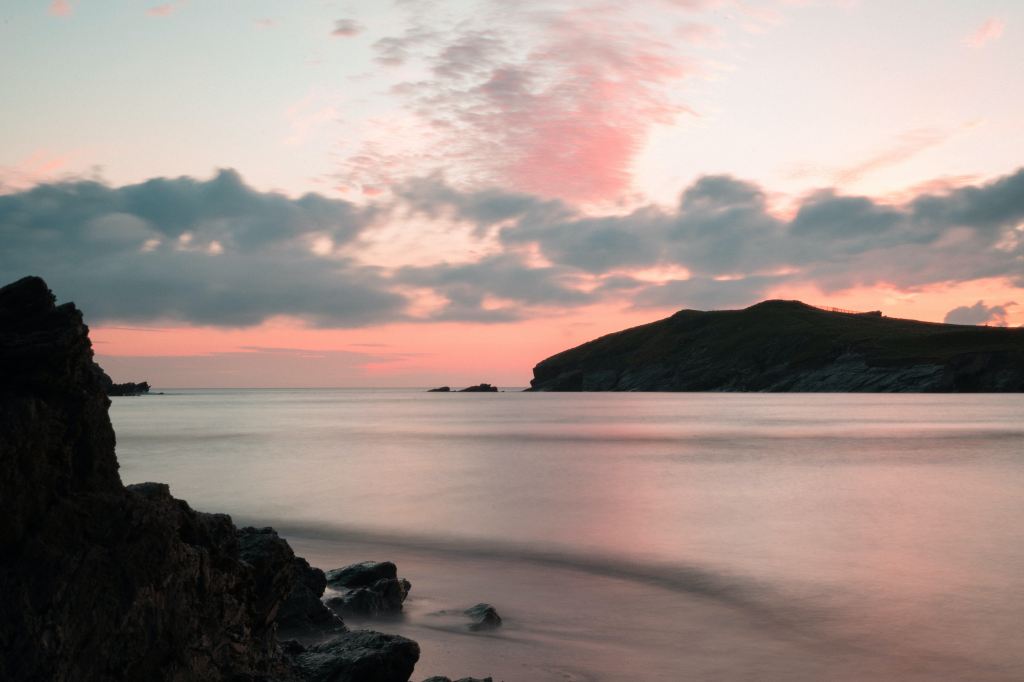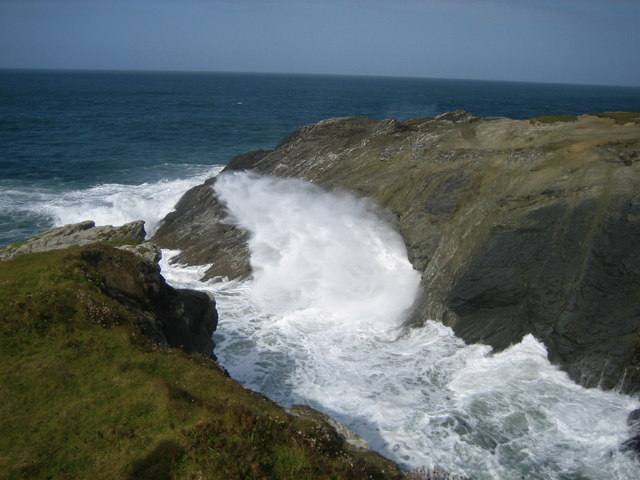
Trevelgue Head
Trevelgue Head (also known as Porth Island), is a historical headland located near Newquay on the North Cornwall coast, with spectacular views of the Atlantic Ocean. Known as one of Cornwall’s finest ancient monuments, it is the site of an Iron Age promontory fort with defensive ramparts and two round barrows dating from the early Bronze Age.
The prominent headland is characterised by dramatic cliffs, providing a stunning backdrop to the coastal landscape. Trevelgue Head is a popular destination for walkers and hikers, with the South West Coast Path passing through.
The headland is rich in natural beauty, featuring wildflowers, coastal heathland, and some lovely local wildlife. Whether exploring the walking trails, enjoying the scenery, or delving into the history of the area, Trevelgue Head invites you to experience the raw beauty of Cornwall’s northern coastline.
Trevelgue Head History
Trevelgue Head on the north coast contains eight massive earth and stone ramparts, two large early Bronze Age barrows and the foundations of several large and unique roundhouses.
The site has a long history, stretching back eight thousand years to the Mesolithic period, although the main phase of activity is associated with the construction of the complex ramparts, which date back to between the sixth and first centuries BC.
On the east side there are defensive earthworks. There is a single bank and ditch on the wider part of the peninsula near the mainland. The wide enclosure between this and the ramparts further west is protected by sea-cliffs on the northern side; on the south side there is a smaller drop to the sea, once protected by an extension of the outer rampart.
There is a gap in the peninsula, crossed by a modern bridge where there may have been originally a land-bridge; immediately before this there are three massive banks and ditches. Beyond the gap and adjacent to it is a rampart, and a final rampart further west.
There are two early Bronze Age round barrows within the defences: a barrow in the eastern enclosure near the cliffs, 18 metres in diameter and 1.6 metres high; and a barrow at the summit of the peninsula, near the western end, 25 metres in diameter and 2.5 metres high. (wi)

Porth Island
Trevelgue head is also known as Porth Island, famous also for its stunning golden sand beach full with rock pools for kids to explore, and the Porth Island bridge and its dramatic blowhole.
Porth Island beach and Trevelgue Head can be accessed at low tide via the beach at Porth Bay or via a narrow footbridge.
At the end of the island there is a blow hole which can be seen at mid tide, especially on windy days. The views from here are spectacular looking back towards Newquay Bay and to Park Head in the north.

Trevelgue Head and Whipsiderry Walk
Along the South West Coast Path, a brisk 4.5 mile walk, high on the hills to the north of Newquay, giving panoramic sea views beyond a coastline carved by the waves into caves and islets. The route visits one of the south west’s major centres of prehistoric civilisation, and visit Whipsiderry at half-tide to catch the spectacular blowhole spouting.
Further details of the walk can be found here.
Are dogs allowed on Porth Island?
Dogs are welcome at Porth Island, with plenty of nearby open spaces, close to the local car park.

Address: Trevelgue Head, Newquay, TR7 3AD
Parking: There is some limited roadside parking, or there are car parks available such as ‘Porth Beach car park’ which is a 5 minute walk away, and Newquay has numerous car parks available if you are walking from the town.
Facilities: There are all the facilities you need located in Newquay which is around a 5 minute drive or a 30 minute walk away.